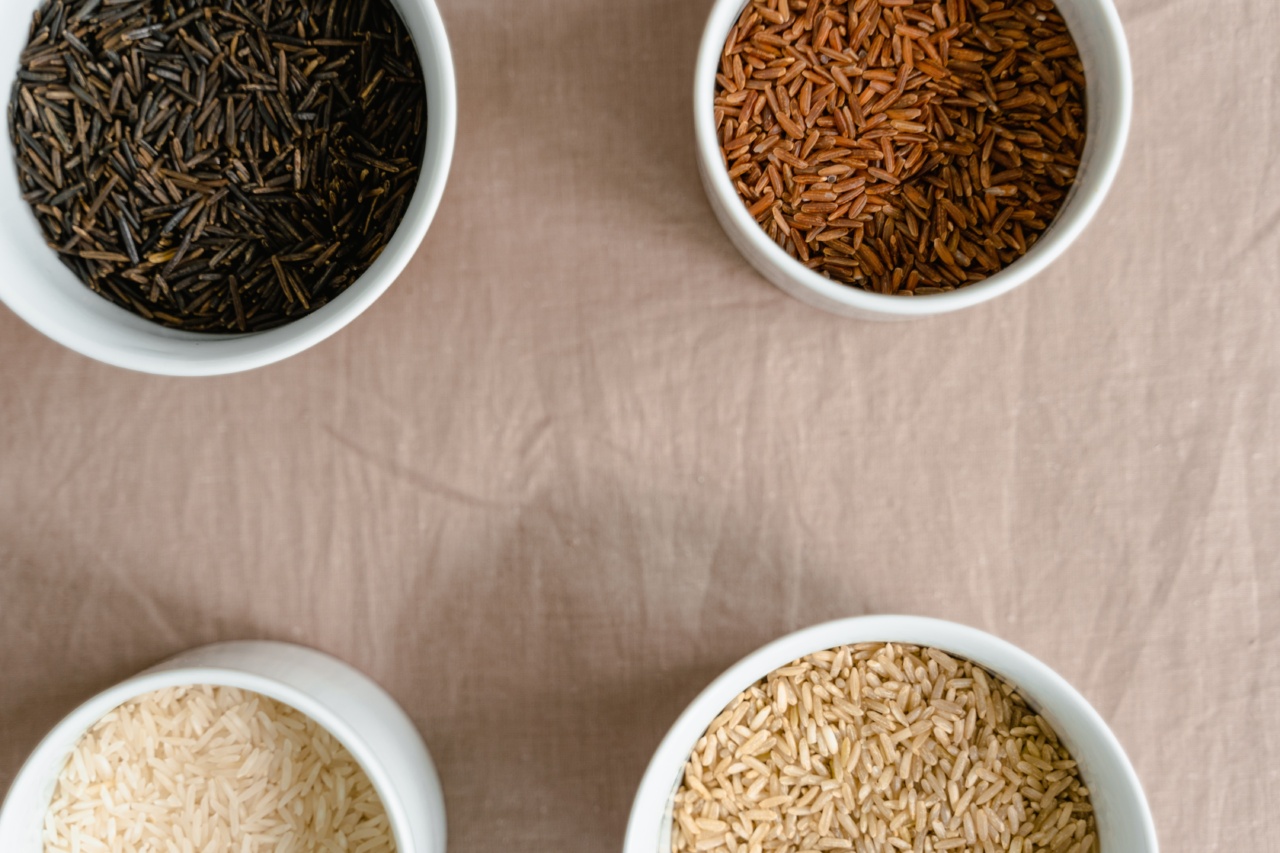Rice is one of the most widely consumed staple foods around the world. It is a primary source of energy for many people, especially in Asian countries.
There are several varieties of rice available, with white rice and brown rice being the most common ones. Despite their similarities, there are significant differences in terms of their nutritional values and health benefits.
In this article, we will compare the nutritional profiles of white rice and brown rice to help you make an informed decision about which one to include in your diet.
What is White Rice?
White rice is the most commonly consumed type of rice. It is processed by removing the outer layers—the husk, bran, and germ, leaving behind the endosperm. The endosperm is further polished to give it a white appearance, resulting in white rice.
This process removes most of the nutrients from the rice.
What is Brown Rice?
Brown rice is a whole grain that is the least processed among various rice types. The processing of brown rice involves only the removal of the outer husk, leaving the bran and germ intact.
As a result, brown rice retains numerous beneficial nutrients compared to white rice.
Nutritional Comparison
When it comes to comparing the nutritional profiles of white rice and brown rice, there are clear differences worth considering. The table below provides an overview of the nutrients found in a 100-gram serving of each rice type:.
| Nutrient | White Rice | Brown Rice |
|---|---|---|
| Calories | 130 kcal | 111 kcal |
| Carbohydrates | 29 grams | 23 grams |
| Protein | 2.7 grams | 2.6 grams |
| Fat | 0.2 grams | 1.8 grams |
| Fiber | 0.3 grams | 1.8 grams |
| Vitamin B1 (Thiamine) | 0.1 mg | 0.4 mg |
| Vitamin B3 (Niacin) | 1.5 mg | 5.2 mg |
| Vitamin B6 | 0.1 mg | 0.4 mg |
| Magnesium | 12 mg | 43 mg |
| Phosphorus | 68 mg | 162 mg |
Benefits of Brown Rice
Choosing brown rice over white rice offers several health benefits. Let’s explore some of the reasons why you might consider switching to brown rice:.
1. Higher Fiber Content
Brown rice is a rich source of dietary fiber due to its intact bran and germ layers. This fiber helps regulate digestion, prevent constipation, and promote a healthy gut. It also aids in weight management by providing a feeling of fullness.
2. Improved Blood Sugar Control
The fiber found in brown rice slows down the absorption of sugars, preventing sudden spikes in blood glucose levels.
This slow release of sugar into the bloodstream helps maintain steady energy levels throughout the day and reduces the risk of type 2 diabetes.
3. Increased Nutrient Content
The processing of white rice removes numerous essential nutrients. Brown rice, on the other hand, retains these nutrients, including B vitamins, magnesium, and phosphorus. These nutrients play vital roles in maintaining overall health and well-being.
4. Lower Glycemic Index
The glycemic index (GI) measures how quickly a food raises blood sugar levels. Brown rice has a lower GI compared to white rice, meaning it causes a slower and more gradual increase in blood glucose levels.
This is particularly important for individuals with diabetes or those looking to manage their weight.
Benefits of White Rice
While brown rice has several advantages over white rice, white rice also offers certain benefits:.
1. Easily Digestible
Due to its refined nature, white rice is easier to digest compared to brown rice. It is often recommended for individuals with digestive issues or those recovering from gastrointestinal illnesses.
2. Energy Boost
White rice provides a quick burst of energy due to its high carbohydrate content. It is an excellent choice for athletes or individuals engaging in high-intensity activities that require rapid energy replenishment.
3. Longer Shelf Life
The removal of the bran and germ layers during processing gives white rice a longer shelf life. It can be stored for extended periods without spoilage, making it more convenient for stockpiling and emergency food supplies.
Conclusion
Choosing between white rice and brown rice ultimately depends on your dietary needs, health goals, and personal preferences. While white rice is less nutrient-dense and higher in calories, it is easily digestible and provides quick energy.
On the other hand, brown rice is a whole grain that offers superior fiber content and a wider array of nutrients. It is beneficial for blood sugar control, weight management, and overall health improvement. Consider incorporating both white and brown rice into your diet in a balanced manner to enjoy the benefits of both.






























